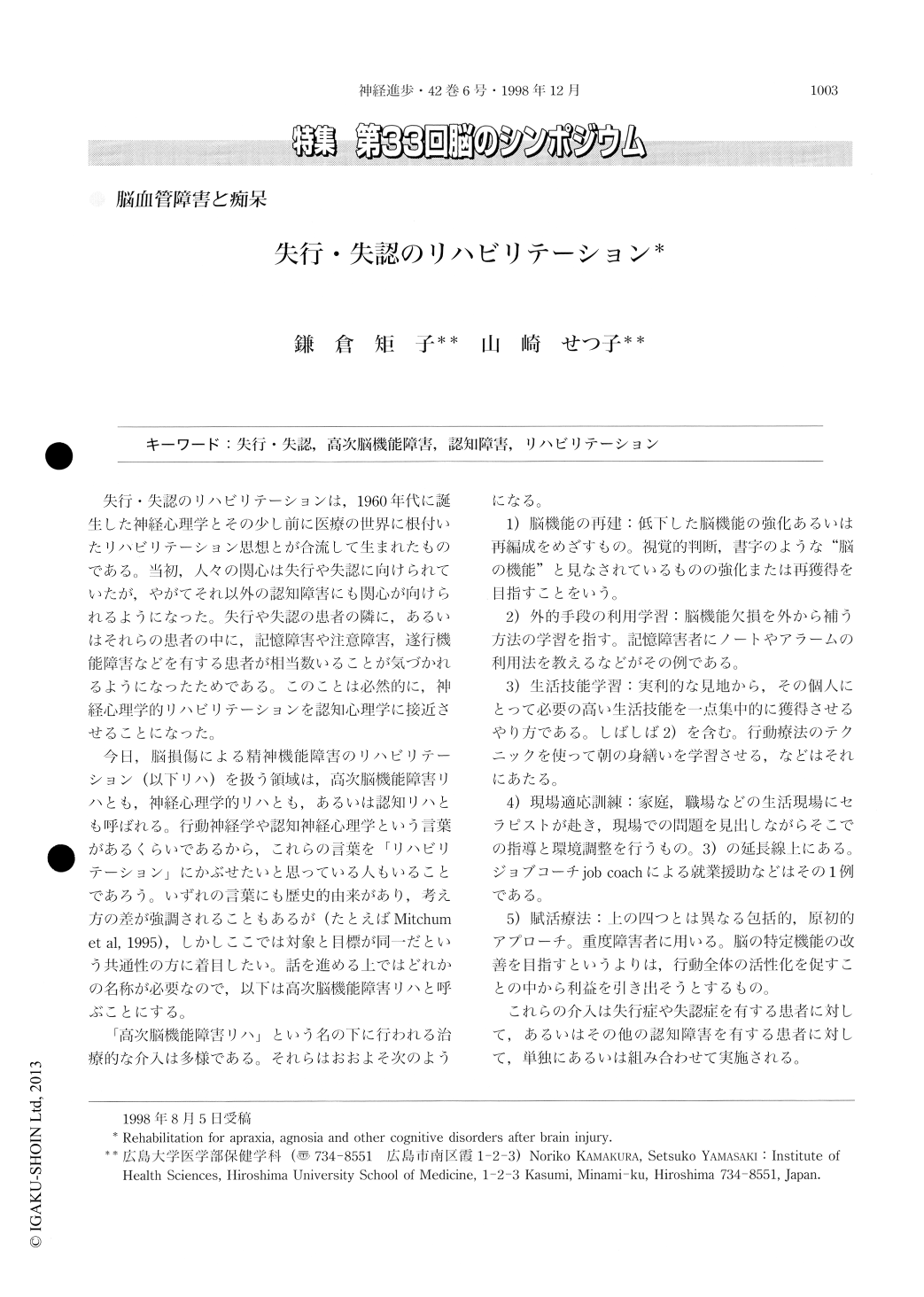Japanese
English
- 有料閲覧
- Abstract 文献概要
- 1ページ目 Look Inside
失行・失認のリハビリテーションは,1960年代に誕生した神経心理学とその少し前に医療の世界に根付いたリハビリテーション思想とが合流して生まれたものである。当初,人々の関心は失行や失認に向けられていたが,やがてそれ以外の認知障害にも関心が向けられるようになった。失行や失認の患者の隣に,あるいはそれらの患者の中に,記憶障害や注意障害,遂行機能障害などを有する患者が相当数いることが気づかれるようになったためである。このことは必然的に,神経心理学的リハビリテーションを認知心理学に接近させることになった。
今日,脳損傷による精神機能障害のリハビリテーション(以下リハ)を扱う領域は,高次脳機能障害リハとも,神経心理学的リハとも,あるいは認知リハとも呼ばれる。行動神経学や認知神経心理学という、漢があるくらいであるから,これらの言葉を「リハビリテーション」にかぶせたいと思っている人もいることであろう。いずれの言葉にも歴史的由来があり,考え方の差が強調されることもあるが(たとえばMitchumet al,1995),しかしここでは対象と目標が同一だという共通性の方に着目したい。話を進める上ではどれかの名称が必要なので,以下は高次脳機能障害リハと呼ぶことにする。
Principles and procedures of rehabilitation for apraxia, agnosia and other cognitive disorders were reviewed. For the last decade, there have been rather few articles describing rehabilitation of typical apraxia or typical agnosia. Wilson (1987) stressed the importance of single case research studies and demonstrated the effect of stepwise training for feeding in the case of an “apraxic” patient. Tanemura et al (1991) demonstrated how to use verbal self-regulation in supressing the involuntary movements of left arm in a patient with diagnostic apraxia.

Copyright © 1998, Igaku-Shoin Ltd. All rights reserved.


